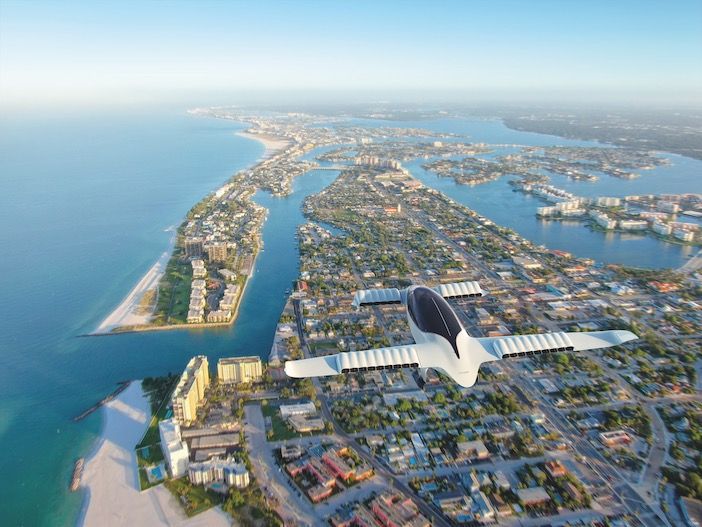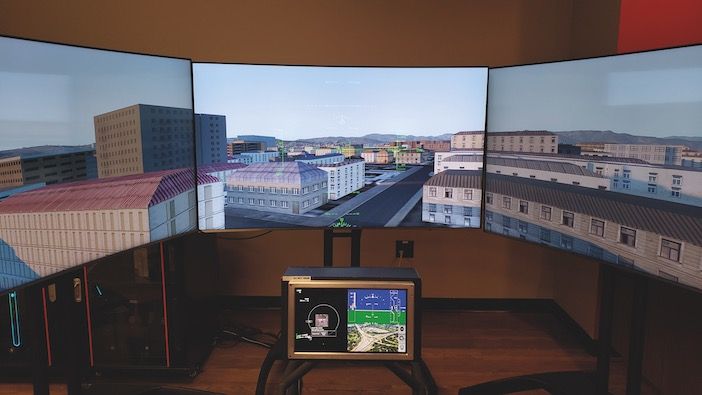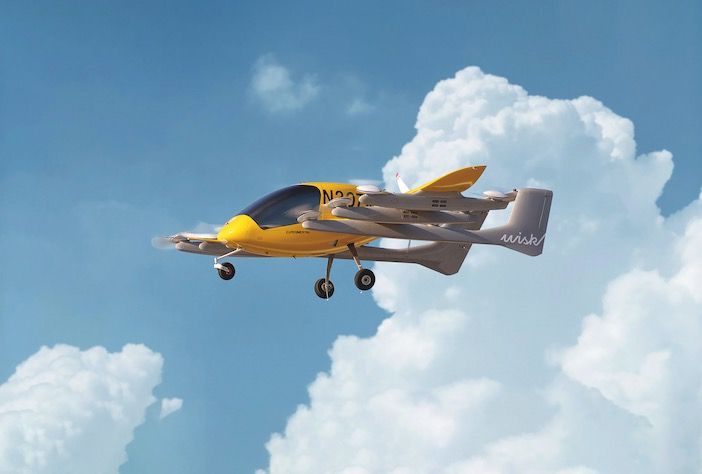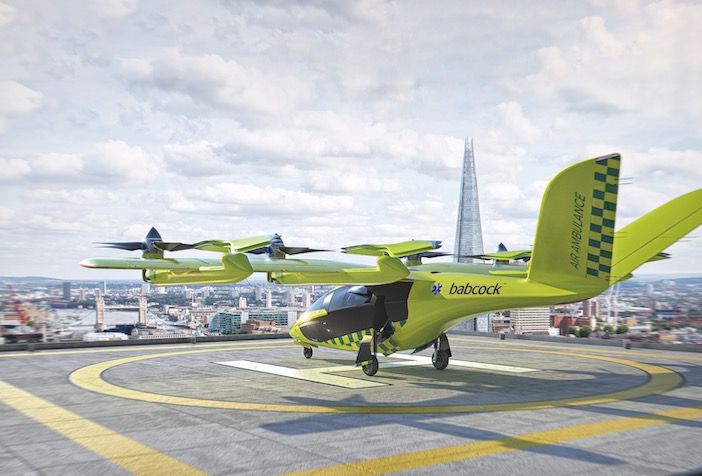Aviation is one of the most innovative industries in the world. It is underpinned by some of the world’s brightest minds, captivating startups, and multi-billion dollar organizations that invest colossal sums in highly advanced R&D programs it is a sector that continues to evolve and progress at supersonic speed, with a track record of achieving the impossible.
From aircraft design and manufacturing processes to technology and controls, incremental improvements continue to be made on all fronts that have contributed to the industry’s ongoing evolution. Indeed, aircraft today are roughly 80% more fuel efficient than those produced in the 1960s, while automation, ultra-light materials, unmanned aircraft systems and electrification are all impending trends set to further change the face of air travel as we know it.
“Like electric cars, electric aircraft will evolve in spurts,” states Vance Hilderman, CEO of independent avionics development and certification company AFuzion. An industry veteran of more than three decades, Hilderman is well-placed to offer a realistic outlook on the trajectory of several key trends, including avionics.
“Over the next three to four years, we’ll see small one-to-four-person piloted eVTOL aircraft emerge,” he says. “Over the next five to six years, we’ll see smaller electric passenger aircraft conversions. Over the next seven to eight years, we’ll see new short range electric commuter aircraft fly commercially. And after 10 years, we’ll see larger 150 passenger aircraft, capable of flying up to 500 miles and smaller 40-person aircraft that can fly 1,000 miles.”
eVTOL aircraft are capturing significant attention at present. Many in the industry believe the aircraft could transform inter-and-intra-city mobility, offering a fast, direct and clean means of travel. Thanks to advances in electric motor and battery technology, eVTOL aircraft are becoming more feasible prospects.

Urban air travel
There are hundreds of eVTOL aircraft development projects in the works at present, with various players jostling to gain an edge in a highly promising market. Tier One supplier Honeywell Aerospace is one of the most prominent companies in this emerging field and formed a dedicated business unit in 2020, complete with engineering, product and sales teams dedicated to systems for new and progressive air mobility offerings.
The division, which is called Honeywell Advanced Air Mobility (AAM), is focused on developing autonomous flight, electric and hybrid-electric systems, hydrogen fuel cells and new avionics concepts for navigation.
“We have a clear vision of a cleaner future – a future of pervasive, accessible, sustainable, aerial mobility,” says Douglas Martens, unmanned aerial systems (UAS) / unmanned aerial vehicles (UAV) sales director at Honeywell Aerospace.
“We are creating a world where air cargo is completely autonomous from the warehouse to your house. Where urban and regional air travel is ubiquitous and air taxis can make a 100-mile, door-to-door commute in less than 45 minutes.”
Honeywell has built an AAM Lab in Phoenix, Arizona to help the firm integrate and advance key technologies in avionics, flight controls and vehicle-to-human-machine interfaces that complement its existing aircraft systems. The division is now beginning to build systems that are pre-integrated and optimized for the UAV, UAS and eVTOL sector.

“Key innovations include things like our compact fly-by-wire system,” Martens says.
A fully electronic flight control system that replaces the conventional manual controls of an aircraft with an all-electronic interface, it sees a computer controlling all of an aircraft’s moveable surfaces, sending messages through digital cabling.
“We’ve also developed our space-derived advanced sidestick inceptors and RDR-84K compact phased-array detect-and-avoid radar,” Martens says, pointing to the unveiling of Honeywell Anthem in late 2021, the organization’s latest avionics solution.
“Advanced flight controls are critical for eVTOL aircraft. Fly-by-wire for example, is necessary for at least two reasons. First, these vehicles have too many effectors to control manually. Second, they have a need for added stability for at least some of the flight states,” says Martens.
“To make advanced air mobility real, we must make robust fly-by-wire work for this form factor.”

fly-by-wire controls and avionics supplied by Honeywell designed to reduce pilot workload (Photo: Vertical)
Bridging the gap
Hilderman believes that all the basic systems of eVTOL aircraft are functionally working today, with many thousands of hours in test flights already conducted. However, he says there is still a significant road ahead before such systems are cleared for use in urban centers.
“For the past two years, the answer has been ‘almost’ for commercial usage,” Hilderman affirms. “The remainder of this year will be the same, while next year we will see several eVTOL aircraft with certified avionics fly. But we are still two to three years away from full-scale production and paying passengers.”
Much of the challenge lies in the fact that these new aircraft are both novel and highly complex. This requires continual innovation in both their avionics technology and the way that avionics are tested to come to fruition.
Further, to fully realize their potential in terms of large-scale deployment by the end of the decade, avionics technologies need to develop consistently for many years to come.
“eVTOL aircraft require many new systems for flight control, battery management and vertical / horizontal flight transitions,” says Hilderman. “While building prototypes is fun, building provably near-perfect avionics systems and then certifying them is incredibly challenging. And doing so cost-effectively is even harder.
“Looking at the bigger electrification picture, replacing liquid fuel on large and long-range aircraft is still at least 20 years away for key reasons of technology, certification, capital costs, infrastructure and politics.”
The autonomous potential
There are both immense opportunities and challenges in the eVTOL space. While the market is growing and maturing at an impressive pace, backed by significant investment, resources and an influx of talent, many hurdles still need to be overcome to reach a point where passengers are taking to the skies on a regular basis.
For Honeywell, avionics and flight control innovations comprise just a few pieces of a much wider puzzle that also need to be addressed.
“We are building ground control station technology, integrated vehicle controls, all-electric propulsion systems, lightweight inceptors, compact flight controls, high assurance actuation, hydrogen fuel cells, and turbogenerators,” Martens says, outlining just some of those additional considerations.
Long term, the goal of manufacturers and operators will be for eVTOL aircraft to work on an autonomous basis, bringing both cost and safety benefits over manned vehicles. However, for Hilderman, the potential that such technologies could be integrated within these aircraft is still a significant way off.
“Autonomous eVTOL aircraft are a huge challenge,” he says. “Take cars – we’ve had them for over 100 years, yet today we still don’t have a certified autonomous car, despite years of trying. Aircraft crashes are far more newsworthy than car crashes, so aviation autonomy is many more years away.
“First, we will see full-scale deployment of small cargo-carrying, crop dusting, and aerial photography autonomous eVTOL aircraft – that is happening now. Next, we’ll see the development of longer range and larger payload autonomous no-passenger aircraft. But autonomous passenger aircraft are at least 20 years away due to certifiable passenger safety challenges the industry is now working on.”

That is not to write off the potential for eVTOL aircraft without autonomous technologies emerging on a broad basis soon. Martens estimates that the advanced air mobility market will reach US$30 billion annually by 2030. Consultants McKinsey also predict that thousands of eVTOL aircraft could be flying above cities in the same year.
For first movers, the opportunities are clear, and the acceleration of innovation in avionics will only continue moving forward, boosted by growing government appetite demonstrated by an interest in rolling out standards and regulations for the certification of this new breed of aircraft.
Should passenger eVTOL aircraft become commercially viable, then operators have the potential to rival today’s largest airlines in terms of both flights per day and fleet size.
Of course, there are still several hurdles to overcome, but the direction and momentum is clear.
Indeed, the eVTOL aircraft market and the development of avionics for it is growing at a pace not seen for many decades in aviation. The industry, and its test engineers are set for an exciting decade.
The Certification Challenge
On 30 June 2022, the European Union Aviation Safety Agency published the first comprehensive proposal for the operation of air taxis in cities. Set to remain open to public consultation until September 30, 2022, the proposed new regulatory framework covers everything from airworthiness and air operations to flight crew licensing and rules of the air.
The European Union Aviation Safety Agency’s latest proposals will establish a harmonized set of regulations and rules at EU level for the new inner and intra-mobility of people and cargo by air. Many manufacturers have signaled they will be ready for the certification of eVTOL aircraft in the coming years.
So how do manufacturers and systems developers need to adapt in order to align with these new regulations and make eVTOLs viable? Vance Hilderman, CEO of avionics development and certification company AFuzion believes that there will be components and systems with changes that are easily addressable, while others may be significantly more complex.
“Much eVTOL avionics will be near copies of existing fixed-wing and rotary-wing systems including navigation, communication, passenger comfort and more. But flight control, motor / rotor control, battery charging, battery management, electric motors and combined hybrid fuel and electric avionics will generally be new for eVTOL.
“Avionics certification costs exceed avionics development costs, and where new technologies are introduced, certification authorities require tight coordination and adoption of new regulations,” he says.
“Avionics certification is also expensive because of rigid standards such as DO-178C for software which imposes 71 formal objectives for critical systems. That is essentially the primary reason we are not certifiably flying any eVTOL aircraft today with paying passengers.”
Software in the spotlight
The success of eVTOL aircraft in reaching commercialization is dependent on the ability of manufacturers to verify the software underpinning their aircraft efficiently and effectively.
Software has become the most scrutinized element of commercial aerospace certification programs, requiring engineers to meticulously review, analyze and test any software that is deployed across the aircraft.
For this reason, many eVTOL aircraft developers are establishing close-knit partnerships with or even acquiring certification specialists to enhance their efforts. This was the case with Joby Aviation’s acquisition of aerospace software engineering firm Avionyx.
Avionyx has been providing software development and verification solutions within the aerospace industry for 30 years. Crucially, the firm has extensive experience performing software verification services to both FAA and European Union Aviation Safety Agency (EASA) standards.
For Joby, the acquisition will enable the firm to scale its resources rapidly to boost its certification activities, integrating the Avionyx team within its own.
“Acquiring Avionyx puts us in an excellent position to meet the regulatory requirements necessary for us to bring the Joby aircraft to market,” said Tom Ferrell, development assurance lead at Joby upon completion of the acquisition.





